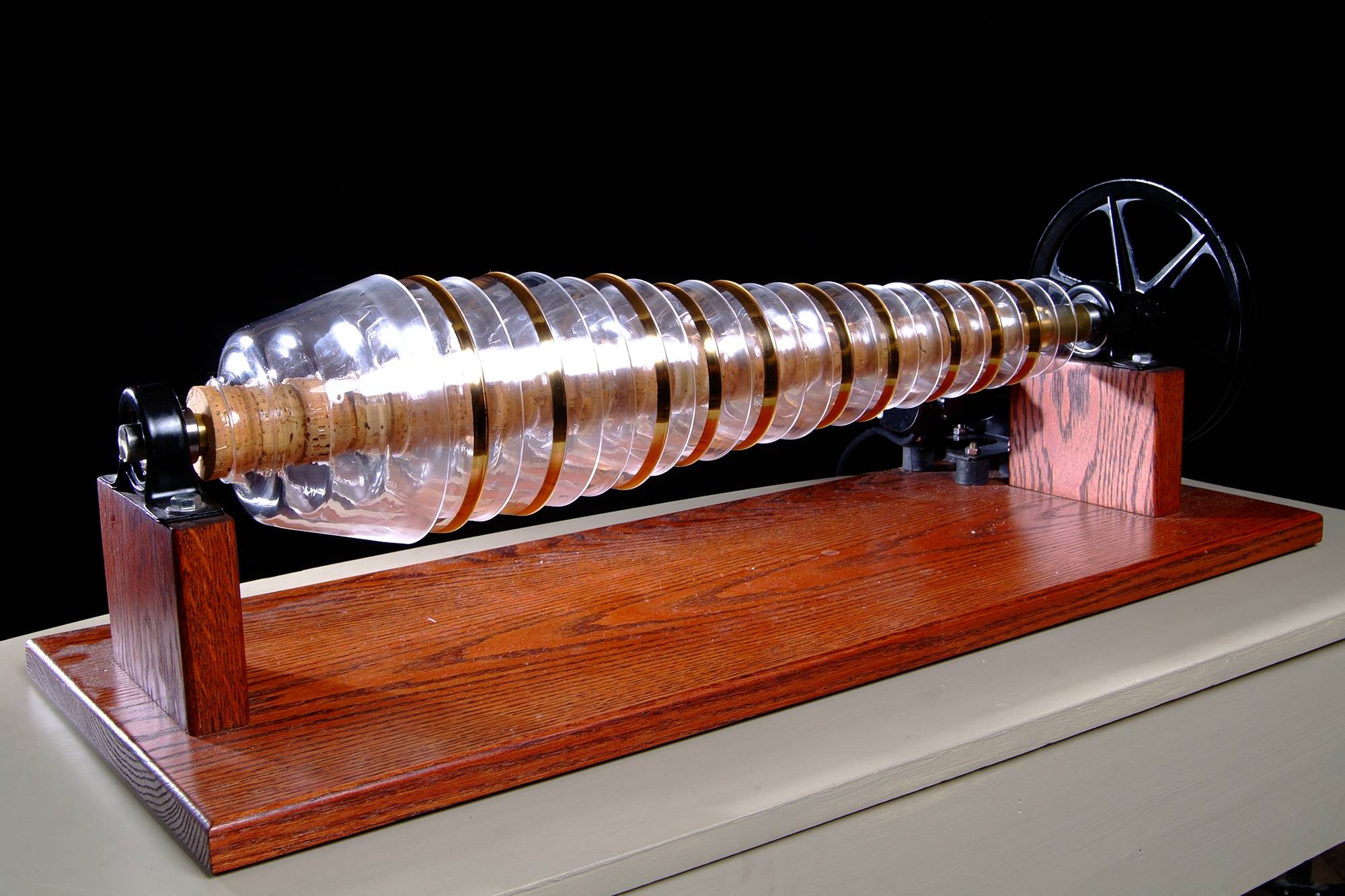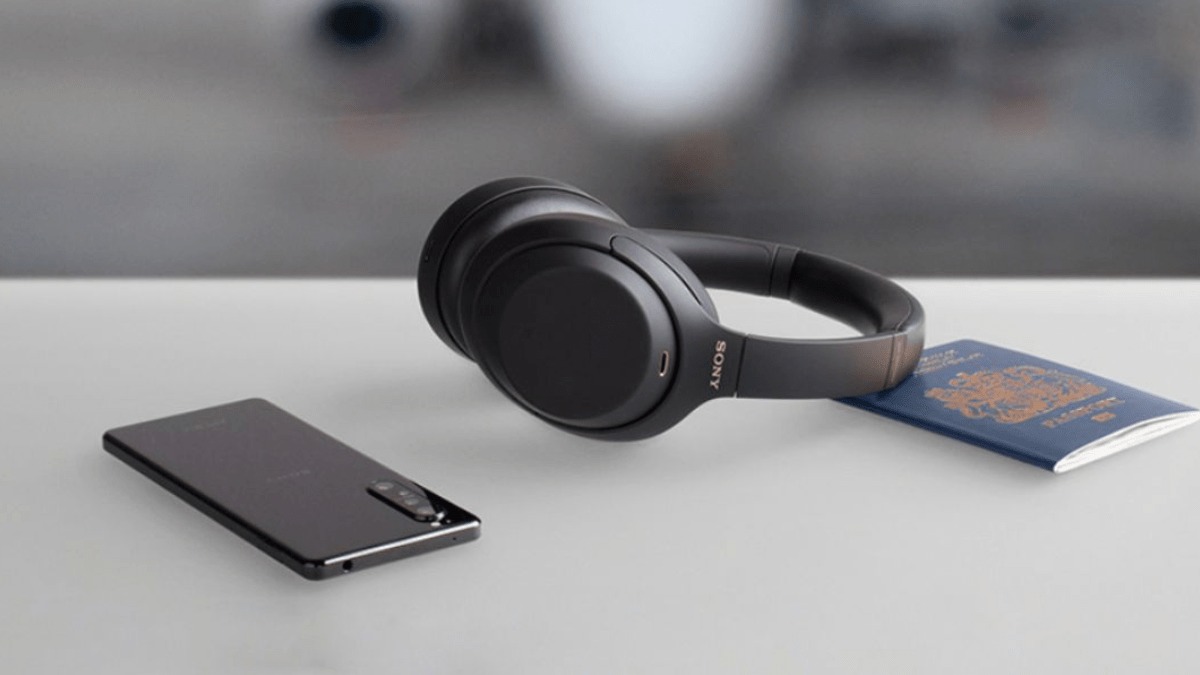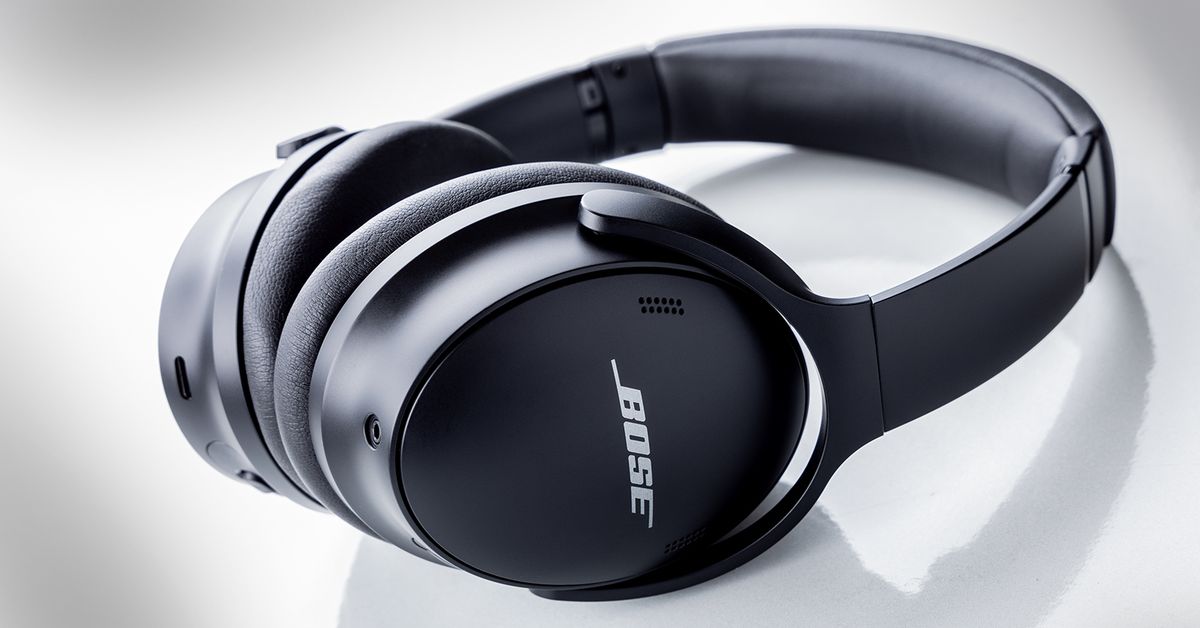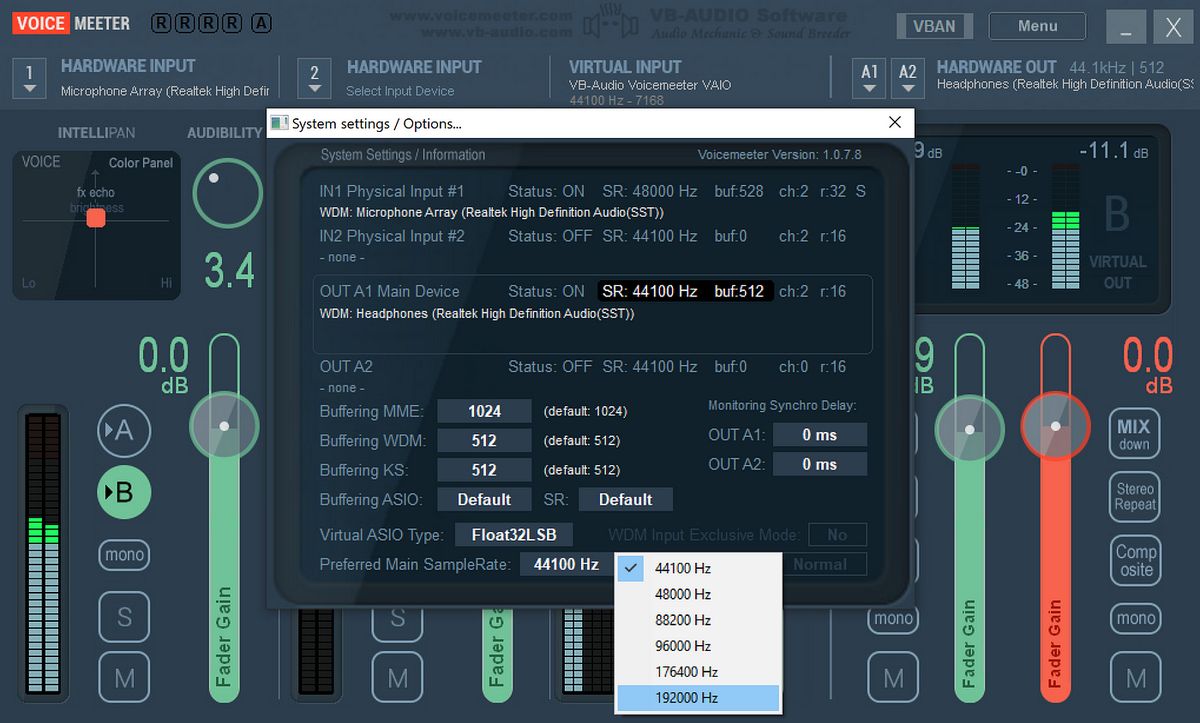Home>Production & Technology>Noise Cancellation>Who Invented Noise Cancellation


Noise Cancellation
Who Invented Noise Cancellation
Modified: January 26, 2024
Discover the history behind the invention of noise cancellation and how it revolutionized audio technology. Learn about the genius behind this groundbreaking innovation.
(Many of the links in this article redirect to a specific reviewed product. Your purchase of these products through affiliate links helps to generate commission for AudioLover.com, at no extra cost. Learn more)
Table of Contents
Introduction
Noise cancellation technology has become an essential feature in many devices we use on a daily basis, from headphones to car audio systems. It is a revolutionary innovation that allows us to enjoy our favorite music or have clear conversations in noisy environments. But have you ever wondered about the origins of noise cancellation technology? Who invented it and how has it evolved over the years?
In this article, we will delve into the fascinating history of noise cancellation and explore how it has become a crucial part of our modern lives. We will also discuss the future possibilities and advancements in this field.
At its core, noise cancellation technology is designed to reduce or eliminate unwanted sounds by generating a sound wave that is the exact opposite of the incoming noise. When these waves combine, they cancel each other out, resulting in a quieter environment. This concept is known as “destructive interference.”
Noise cancellation has its roots in the early 20th century when scientists and inventors started exploring ways to control and minimize unwanted sounds. However, it wasn’t until the 1950s that the concept of active noise cancellation, as we know it today, started taking shape.
Early pioneers in noise cancellation technology focused mainly on passive techniques, such as soundproofing materials and enclosures, which aimed to block or absorb sound waves. While these methods were effective to some extent, they were not practical for portable devices or reducing noise in open environments.
The breakthrough in noise cancellation came with the invention of active noise cancellation, which was made possible by advancements in electronics and signal processing. This technology introduced the concept of using microphones and speakers to actively generate sound waves that counteract the unwanted noise.
The Need for Noise Cancellation
In today’s fast-paced and noisy world, noise cancellation has become increasingly important. Whether it’s the constant humming of machinery, the cacophony of traffic on the streets, or the clamor of a crowded coffee shop, excessive noise can be distracting and detrimental to our concentration, productivity, and overall well-being.
One of the primary areas where noise cancellation technology shines is in the field of audio. Musicians, audio engineers, and audiophiles seek to enjoy their music or recordings without the interference of background noise. Active noise cancellation allows them to immerse themselves fully in the sound experience, hearing every detail and nuance without distractions.
Another area where noise cancellation technology has made a significant impact is in the realm of communication. Whether it’s making phone calls or participating in online meetings, clear and uninterrupted communication is crucial. Noise-canceling headphones with built-in microphones help to filter out background noise, ensuring that the voice is heard clearly on the other end.
In the aviation industry, noise cancellation has become an essential component of cockpit communications and passenger comfort. Pilots rely on clear communications to ensure the safety of their flights, and noise-canceling headsets help to achieve this by minimizing the noise from the aircraft’s engines and environmental factors. For passengers, noise-canceling earphones can provide a more pleasant flying experience by reducing the impact of the loud engine noise.
Additionally, noise cancellation has found its application in various work environments where concentration is paramount. Whether it’s open-plan offices, call centers, or even in the medical field, noise-canceling technology helps to create a quieter and more focused workspace, leading to increased efficiency and productivity.
Furthermore, noise cancellation can contribute to reducing the potential negative impact of long-term exposure to high noise levels. Prolonged exposure to loud noises, such as construction sites or industrial settings, can lead to hearing loss and other health issues. By implementing noise cancellation technology, workers in such environments can better protect their hearing and overall well-being.
Overall, noise cancellation technology has become an indispensable tool in various aspects of our lives, enhancing our experiences, improving communication, and promoting a quieter and more peaceful environment. As technology continues to advance, we can expect even more exciting applications and innovations in the field of noise cancellation.
Early Attempts at Noise Cancellation
Before the invention of active noise cancellation, early pioneers explored different methods to reduce unwanted noise. While these techniques were not as advanced as the noise cancellation technology we have today, they laid the foundation for future innovations in this field.
One of the earliest attempts at noise reduction can be traced back to the early 20th century when scientists began experimenting with soundproofing materials and enclosures. These materials, such as dense foams and heavy curtains, were used to absorb or block sound waves, reducing the amount of noise that reached the desired space.
However, these passive methods had limitations. They were effective in confined spaces, such as recording studios or soundproof rooms, but were not practical for everyday use or for reducing noise in open environments.
In the 1930s, another approach called “active noise control” emerged. This involved using microphones to capture the incoming noise and speakers to emit an inverted sound wave, effectively canceling out the incoming noise. While this technique showed promise, it was limited by the available technology, as the processing power required for real-time noise cancellation was not yet developed.
It wasn’t until the 1950s that significant advancements in electronics and signal processing paved the way for active noise cancellation as we know it today. In 1957, inventor Lawrence J. Fogel filed a patent for a “sound damping system,” which described a method of reducing noise by generating an “anti-sound” wave to cancel out unwanted noise.
However, it was Dr. Amar Bose, the founder of the audio company Bose Corporation, who played a crucial role in bringing active noise cancellation to the forefront of consumer technology. In the 1970s, Dr. Bose and his team developed the first commercially viable noise-canceling headphones, known as the Bose QuietComfort series.
These headphones utilized a combination of microphones and electronics to generate opposing sound waves, effectively canceling out external noise. The success of the QuietComfort series helped to popularize noise-canceling technology, making it more accessible to consumers and paving the way for further advancements in the field.
Although early attempts at noise cancellation were relatively primitive compared to today’s technology, they laid the foundation for future innovations. These early pioneers recognized the importance of reducing unwanted noise and actively pursued methods to achieve this. Their efforts set the stage for the breakthroughs that would follow, leading to the development of more sophisticated and effective noise cancellation systems.
The Invention of Active Noise Cancellation
The advent of active noise cancellation revolutionized the way we combat unwanted noise. It introduced the concept of using microphones and speakers to actively generate sound waves that counteract external noise, resulting in a clearer and more peaceful environment.
The development of active noise cancellation technology can be attributed to the advancements in electronics and signal processing in the 1950s. Engineers and researchers started experimenting with the idea of generating sound waves that are the exact opposite of the incoming noise, effectively canceling it out through a phenomenon called “destructive interference.”
In the late 1950s, physicist Lawrence J. Fogel filed a patent application for a “sound damping system” that described the concept of active noise cancellation using a combination of microphones, speakers, and electronics. While Fogel’s invention paved the way for future innovation, it was Dr. Amar Bose who took active noise cancellation to the next level.
Dr. Amar Bose, the founder of Bose Corporation, was inspired to develop noise-canceling technology after experiencing the frustration of unwanted aircraft noise during a flight. In the 1970s, Dr. Bose and his team at Bose Corporation dedicated their efforts to perfecting active noise cancellation technology.
Bose Corporation introduced the first commercially viable noise-canceling headphones in 1989, known as the Bose QuietComfort series. These headphones utilized microphones to measure ambient noise and sophisticated digital signal processing algorithms to generate an inverted sound wave that canceled out the unwanted noise. The result was a stunning reduction in background noise and an immersive audio experience.
The success of the Bose QuietComfort series popularized active noise cancellation technology, leading to its integration into various consumer and industrial applications. Today, noise-canceling headphones are widely available, providing a sanctuary of silence in noisy environments while delivering exceptional audio quality.
Active noise cancellation has also found its way into other areas beyond headphones. It is now incorporated into car audio systems, allowing drivers and passengers to enjoy clear and crisp audio even in noisy road conditions. Additionally, active noise cancellation has been adopted in office environments, where it helps reduce distractions and improve focus.
The invention of active noise cancellation opened up a myriad of possibilities for creating quieter and more accommodating spaces. It has given individuals the ability to control the noise around them and enhanced their overall listening experiences. Furthermore, the development of noise cancellation technology has sparked further innovations and advancements in the field, paving the way for new applications and refined techniques.
As technology continues to evolve, we can expect continuous improvements in active noise cancellation systems, leading to even more effective and personalized noise reduction solutions. The quest for quieter environments and enhanced audio experiences will undoubtedly push the boundaries of noise cancellation technology in the years to come.
The Role of Amar Bose
Dr. Amar Bose, the founder of Bose Corporation, played a pivotal role in the development and popularization of active noise cancellation technology. His relentless pursuit of better sound quality and his dedication to innovation transformed the audio industry and revolutionized the way we experience sound.
Dr. Bose’s interest in noise cancellation stemmed from his personal experience. During a flight, he was frustrated by the overpowering noise of the aircraft engines that hindered his ability to enjoy music. This experience ignited his determination to find a solution.
In the 1970s, Dr. Bose and his team at Bose Corporation began researching and developing active noise cancellation technology. They envisioned a world where unwanted noise could be canceled out, allowing people to enjoy their music or conversations without distractions.
Through years of research and experimentation, Dr. Bose and his team successfully created the first commercially viable noise-canceling headphones, known as the Bose QuietComfort series, which were introduced in 1989. These headphones utilized advanced signal processing algorithms and microphones to measure ambient noise and generate an inverted sound wave to cancel it out.
The QuietComfort series quickly gained popularity and acclaim for their exceptional noise-canceling capabilities and superior audio quality. They became the go-to choice for professionals and music enthusiasts alike, revolutionizing the headphone market.
Dr. Bose’s commitment to innovation extended beyond noise cancellation technology. He continuously pushed the boundaries of audio engineering and focused on improving the overall sound experience. His research led to advancements in speaker technology, resulting in products that delivered more lifelike and immersive sound reproduction.
Dr. Amar Bose’s impact on the audio industry goes beyond his inventions. He instilled a culture of excellence and innovation within Bose Corporation, fostering a commitment to research and development to create cutting-edge audio solutions. His emphasis on the marriage of technology and artistry transformed the way people think about sound and deeply influenced the audio industry as a whole.
In addition to his contributions to the audio industry, Dr. Bose was also a dedicated educator. As an engineering professor at MIT, he inspired and mentored countless students, sharing his passion for innovation and nurturing future engineers and inventors.
Dr. Amar Bose’s pioneering work in noise cancellation technology and his relentless pursuit of audio excellence have left an indelible mark on the industry. His vision and dedication to innovation have shaped the way we experience sound, providing us with immersive and distraction-free audio environments.
Even after his passing in 2013, Dr. Bose’s legacy lives on in the continued advancements of noise cancellation technology and the commitment to excellence that embodies the Bose Corporation. His contributions have forever changed the audio landscape, enhancing our audio experiences and transforming the way we interact with sound.
Noise Cancellation Today
Noise cancellation technology has come a long way since its inception, and today it is widely integrated into various devices and industries. From headphones and earphones to car audio systems and even smart home devices, noise cancellation has become an essential feature for many consumers.
In the realm of personal audio, noise-canceling headphones and earphones have become increasingly popular. They provide an immersive listening experience by effectively canceling out background noise, allowing users to enjoy their music, podcasts, or videos without distractions. Additionally, many models now offer customizable noise cancellation settings, allowing users to adjust the level of cancellation based on their environment.
Active noise cancellation has also found its way into the automotive industry. Many high-end car manufacturers now incorporate noise cancellation systems in their vehicles, reducing engine and road noise. This enhances the overall comfort and driving experience, allowing occupants to enjoy a quieter cabin environment.
Moreover, noise cancellation technology has made its mark in the realm of telecommunications and conferencing. Noise-canceling microphones are commonly used in smartphones, laptops, and other communication devices, ensuring clear and crisp audio transmission during phone calls, video conferences, and online meetings. These microphones work in tandem with noise-canceling algorithms to filter out background noise, making communication more effective regardless of the environment.
In recent years, noise cancellation has also extended to smart home devices. Speakers equipped with noise cancellation technology can adapt their audio output to compensate for ambient noise, ensuring that the sound remains clear and balanced. This feature enhances the audio quality of voice assistants, music playback, and other audio content played through these devices.
Furthermore, noise cancellation technology continues to evolve and improve. Manufacturers are investing in research and development to enhance the effectiveness and efficiency of noise cancellation algorithms. New algorithms are being developed to provide more precise cancellation, even for complex and dynamic noise environments.
There is also a growing focus on incorporating noise cancellation into smaller and more portable devices. This allows users to experience the benefits of noise cancellation in a wider range of scenarios, whether it’s on public transportation, in busy cafes, or while exercising outdoors.
As noise cancellation technology becomes more advanced and widely adopted, it has the potential to significantly improve various aspects of our lives. From enhancing entertainment experiences to improving communication and reducing the impact of noise pollution, noise cancellation has become an integral part of our modern society.
With ongoing advancements and innovations, we can expect noise cancellation technology to continue evolving and becoming even more accessible, reliable, and effective, ensuring that we can enjoy a quieter and more immersive audio experience in the years to come.
Future Innovations in Noise Cancellation Technology
The field of noise cancellation technology is ripe with possibilities for future advancements and innovations. As technology continues to evolve, we can expect to see exciting developments that further improve the effectiveness and versatility of noise cancellation in various applications.
One area of focus is the refinement of noise cancellation algorithms. Researchers are continuously working on developing advanced algorithms that can better analyze and understand the characteristics of different types of noise. This will result in more precise and adaptive noise cancellation, allowing users to enjoy an optimized listening experience in any environment.
Advancements in artificial intelligence and machine learning are also poised to revolutionize noise cancellation technology. By utilizing AI algorithms, noise-canceling devices can learn and adapt to individual preferences, automatically adjusting the cancellation settings based on personal preferences or the specific characteristics of a user’s environment. This level of personalization will enhance both the comfort and effectiveness of noise cancellation.
Additionally, there is growing interest in developing noise cancellation solutions for smaller and more portable devices. This includes integration into wearable technology, such as smartwatches or fitness trackers, allowing users to enjoy noise cancellation benefits during their workouts or daily activities. The miniaturization of noise cancellation technology will make it more accessible and convenient for individuals on the go.
Another avenue of exploration is the combination of noise cancellation with other emerging technologies. For example, the integration of noise cancellation with augmented reality or virtual reality devices can create a more immersive and engaging experience by reducing the impact of external distractions. This combination has the potential to revolutionize gaming, education, and various other industries where immersion and attention to detail are paramount.
Furthermore, there is ongoing research into more energy-efficient noise cancellation systems. Manufacturers are striving to develop techniques that minimize power consumption without compromising the performance and effectiveness of noise cancellation. This will lead to longer battery life for portable devices and reduce the environmental impact of noise-canceling technology.
Alongside technological advancements, there is also a growing interest in addressing environmental noise pollution. As cities become increasingly noisy, noise cancellation technology can play a crucial role in creating quieter and more harmonious living environments. Governments and urban planners may explore implementing noise cancellation solutions in public spaces, transportation systems, and residential areas to improve the quality of life for residents.
In summary, the future of noise cancellation technology holds great promise. With continued advancements in algorithms, artificial intelligence, miniaturization, and energy efficiency, we can expect even more precise, adaptive, and accessible noise cancellation solutions. These innovations will enhance our audio experiences, improve communication, and create quieter and more peaceful environments in a wide range of applications.
Conclusion
Noise cancellation technology has come a long way since its early beginnings, and its impact on our lives continues to grow. From early attempts at soundproofing and passive noise reduction to the invention of active noise cancellation by pioneers like Dr. Amar Bose, the field has seen remarkable advancements.
Today, noise cancellation technology is integrated into a wide range of devices, including headphones, car audio systems, and communication devices. It has transformed the way we experience audio, allowing us to immerse ourselves in pure sound and communicate more effectively in noisy environments.
As technology evolves, we can anticipate even more impressive innovations in the field of noise cancellation. Advancements in algorithms, artificial intelligence, and miniaturization will take noise cancellation to new heights, providing more precise and adaptive experiences tailored to individual preferences.
In the future, we may see noise cancellation integrated into smaller and more portable devices, wearable technology, and even augmented reality experiences. These advancements will further simplify our lives and allow us to enjoy noise-free environments wherever we go.
Beyond personal use, noise cancellation technology has the potential to address environmental noise pollution. By implementing noise cancellation systems in public spaces and transportation systems, we can create quieter and more peaceful cities, improving the well-being and quality of life for residents.
In conclusion, noise cancellation technology has become an indispensable tool in our quest for quieter, more focused, and more enjoyable environments. From its humble beginnings to its current widespread adoption, the field continues to evolve and innovate. With ongoing advancements, noise cancellation technology will continue to shape the way we experience sound and enhance our overall well-being in the years to come.











